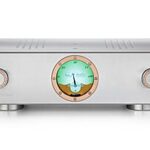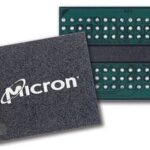Introducing the most recent QLC V-NAND technology, incorporating several revolutionary advancements, including Channel Hole Etching, enabling the highest layer count in the field with a double stack configuration.
Samsung Electronics, a pioneer in advanced memory solutions, has commenced large-scale manufacturing of its one-terabit (Tb) quad-level cell (QLC) ninth-generation vertical NAND (V-NAND).
Being the first to implement mass production of QLC ninth-generation V-NAND, following the successful rollout of triple-level cell (TLC) ninth-generation V-NAND earlier this year in April, Samsung is reinforcing its dominance in the high-capacity, high-performance NAND flash sector.
Commenting on this milestone, SungHoi Hur, Executive Vice President and Head of Flash Product & Technology at Samsung Electronics, stated, “Kicking off the successful mass production of QLC ninth-generation V-NAND just four months after the TLC version allows us to offer a full lineup of advanced SSD solutions tailored to the requirements of the AI era.”
Samsung is poised to broaden the utilization of QLC ninth-generation V-NAND, commencing with branded consumer goods and progressing to mobile Universal Flash Storage (UFS), PCs, and server SSDs, catering to clientele, including cloud service providers.
![]()
Samsung’s QLC ninth-generation V-NAND integrates various innovations that have resulted in technological advancements:
- Samsung’s unparalleled Channel Hole Etching technique was utilized to achieve the most extensive layer count in the sector with a double stack arrangement. Leveraging expertise acquired from TLC ninth-generation V-NAND, cell and peripheral circuit areas were optimized, obtaining an industry-leading bit density approximately 86% higher than the prior QLC V-NAND generation.
- Designed Mold technology regulates the spacing of Word Lines (WL) that govern the cells, ensuring uniformity and optimizing cell characteristics within layers. These attributes are increasingly critical as V-NAND layer counts rise. Implementation of Designed Mold has boosted data retention performance by around 20% compared to previous versions, enhancing product reliability.
- Predictive Program technology anticipates and manages cell state alterations to reduce unnecessary actions. Samsung’s QLC ninth-generation V-NAND has doubled write performance and enhanced data input/output speed by 60% through advancements in this technology.
- Data read and write power consumption has declined by about 30% and 50%, respectively, with the adoption of Low-Power Design. This methodology reduces the voltage that drives NAND cells and decreases power consumption by only sensing the necessary bit lines (BL).










